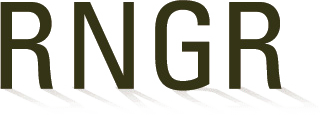
Krascheninnikovia (lanata)
|
Allegra Mount Seed Lab Manager Borderlands Restoration PO Box 1191 Patagonia, Arizona 85624 949-690-2592 borderlands.restoration@gmail.com www.borderlandsrestoration.org |
| Family Scientific Name: | Chenopodiaceae | ||
|---|---|---|---|
| Family Common Name: | Goosefoot Family | ||
| Scientific Name: | Krascheninnikovia lanata (Pursh) A. Meeuse & Smit | ||
| Common Name: | Winterfat | ||
| Ecotype: | Madrean Archipelago | ||
| General Distribution: | Found on slopes and plains, sometimes on alkaline soils from 2,000–7,000 ft (500-2100m) (Ogle et al., Flora of North America Editorial Committee 1993+). Does not tolerate excessive moisture or acidic soils (Ogle et al.). Important forage for both livestock and wildlife (Ogle et al.). | ||
| Propagation Goal: | Plants | ||
| Propagation Method: | Seed | ||
| ProductType: | Container (plug) | ||
| Propagule Collection: |
Collect by hand when seeds are easily separated from plant. Bracts surrounding seeds should be brownish and slightly crumbly. If they are green and flexible, the seeds are not ready. |
||
| Propagule Processing: |
Seeds are fairly delicate and can easily be damaged. For this reason, it is advisable to maintain viability by leaving the four-winged, white fluffy bracts on the seed for storage and planting (Ogle et al.). Seed can generally be stored for 1-2 years under optimal conditions (dry, 5°C). However, viability may decrease by as much as 50% in the first year of storage and it decreases drastically after 2-3 years of storage (Ogle et al., Majerus 2003). For this reason, seed should be planted as soon after collection as possible. |
||
| Establishment Phase: |
Germination rates rely heavily on the age of the seed. Fresh (1-2 years old) seed germination rates are typically 85-95% but seed 3 years old or older has germination rates of 0-15%, even under optimal storage conditions (Ogle et al., Majerus 2003). Seed should be sowed on soil surface or up to ¼ inch deep, but no deeper (Ogle et al.). It is unknown if removing the bracts has any effect on germination rates, so this may be something to test (Majerus 2003). |
||
| References: |
Flora of North America Editorial Committee, eds. Flora of North America North of Mexico. 20+ vols. New York and Oxford, 1993+. Majerus, Mark. "Production and Conditioning of Winterfat Seeds (Krascheninnikovia lanata)." Native Plants Journal 4.1 (2003): 10-15. Ogle, Daniel G. et al. “Plant Guide for winterfat (Krascheninnikovia lanata (Pursh) A.D.J. Meeuse & Smit).” USDA NRCS Plant Guide. USDA-Natural Resources Conservation Service, Idaho State Office. Boise, ID. Web. https://plants.usda.gov/plantguide/pdf/pg_krla2.pdf [2017, January 3]. Borderlands Restoration Network (2018). BRN Native Plant Materials Program Database. Unpublished Raw Data. |
||
Citation:
Allen-Cantú, Juniper; Claverie, Francesca; McNelis, Perin; Mount, Allegra. 2018. Propagation protocol for production of Container (plug) Krascheninnikovia lanata (Pursh) A. Meeuse & Smit Plants Borderlands Restoration Patagonia, Arizona. In: Native Plant Network. URL: https://NativePlantNetwork.org (accessed 2025/11/16). US Department of Agriculture, Forest Service, National Center for Reforestation, Nurseries, and Genetic Resources.



